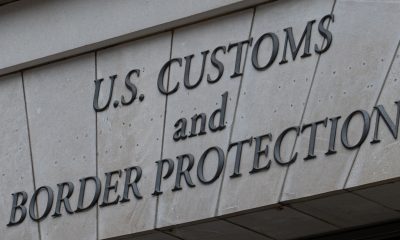National
Bias a Factor in Suspending Black Students


Judith Browne Dianis, co-director of the Advancement Project testifying before Congress on the school-to-prison pipeline. (Photo courtesy Freddie Allen/NNPA)
By Freddie Allen
NNPA Washington Correspondent
WASHINGTON (NNPA) – A new collection of research shows that despite the myths surrounding Black student behavior, poverty and severity of the offense have very little to do with the rate Black students are suspended from school.
Rather, the studies point a finger in another direction: the implicit bias perpetrated by school officials.
The Discipline Disparities Research-to-Practice Collaborative, a group of researchers, educators, advocates, and policy analysts funded by the Atlantic Philanthropies and the Open Society Foundations, compiled the research on school discipline.
According to the Collaborative, more than 3 million students from kindergarten to 12th grade were suspended during the 2009-2010 school year, twice the rate of suspensions since the 1970s. Black students are nearly 3.5 times as likely to be suspended than their White peers.
In the briefing paper titled, “Are Black Kids Worse? Myths and Facts about Racial Differences in Behavior,” researchers from the Equity Project at Indiana University in Bloomington found that “there is simply no good evidence that racial differences in discipline are due to differences in rates or types of misbehavior by students of different races.”
Research also showed that despite popular myths the relationship between poverty and disruptive school behavior has been overstated.
When researchers looked at middle school referrals, White students were more likely to get sent to office over “observable offenses” such as smoking and vandalism and Black students were disciplined more frequently for subjective reasons including disrespectful behavior, loud noise and defiance.
“In other words, regardless of a school’s official disciplinary policy, there are a variety of factors involved in determining a student’s punishment, not the least of which is the mood, ideology, philosophy, values, and biases of the adults making that decision,” stated the briefing paper on implicit bias. “The more subjective the category of offense – i.e., insubordination, disobedience, disruption, defiance – the greater the risk that bias (either explicit or unconscious) will seep into the process.”
Researchers often use the Implicit Association Test to measure implicit bias.

Judith Browne Dianis, co-director of the Advancement Project testifying before Congress on the school-to-prison pipeline. (Photo courtesy Freddie Allen/NNPA)
“Researchers have found that 80% of tested Whites and 40% of tested Blacks show a pro-White bias,” stated the briefing paper. “They consistently implicitly associate Blacks with negative attitudes such as bad and unpleasant, and with negative stereotypes such as aggressive and lazy.”
Researchers from the University of Wisconsin developed a “toolkit” of strategies to combat implicit bias including stereotype replacement, counter-stereotypic imagining that involves thinking about a famous or familiar person that debunks the stereotype, learning about a person’s background and developing an individualized response, tastes, hobbies, and family, and perspective-taking.
“All children deserve access to a quality education, but too often, children of color are pushed out of the classroom – not because they’re behaving any worse than other students, but because of harsh and often discriminatory school disciplinary policies,” said Judith Browne Dianis, co-director of the Advancement Project and member of the research collaborative. “While the notion of a post-racial society is aspirational in theory, racial discrimination in school discipline is a major problem.”
The Collaborative also recommended that schools utilize “a systematic protocol” such as the Virginia Threat Assessment Guidelines instead of zero tolerance policies that quickly usher’s students down the school-to-prison pipeline.
The Collaborative researchers reported that, “Use of the Virginia Threat Assessment Guidelines across schools in Virginia was associated with a 19% reduction in the number of long-term suspensions and an 8% reduction in the number of short-term suspensions, greater than schools not using the Guidelines.”
The Virginia Threat Assessment Guidelines entail communicating with the students involved, distinguishing between real and fleeting threats, and intervening before any threats escalate into violence.
The Collaborative briefing paper on new research stated: “Use of the Guidelines was associated with reductions in suspensions for all racial groups included in the study, as well as a reduction in dis-proportionality between Black males and White even after controlling for school size and poverty.”
In schools that didn’t follow the Virginia Threat Assessment Guidelines, there was a six point gap between Black male and White male student long-term suspension rates, compared to a three point gap in schools that followed the guidelines.
The Discipline Disparities Research-to-Practice Collaborative recommended a range of interventions including building supportive relationships with students, providing high-quality academic opportunities, “culturally relevant and responsive teaching,” and creating “bias-free” learning environments.
“Research shows the best way to create a positive school climate is to foster trusting, supportive relationships between students and adults in the school,” Browne Dianis said. “And when misbehavior does occur, it should be addressed through constructive and equitable ‘restorative justice’ policies that give students an opportunity to learn from, and make amends for, mistakes. We should focus on problem-solving instead of just handing out penalties.”
Browne Dianis explained, “Although it is difficult and uncomfortable to talk directly about race and other differences, addressing inequalities in education requires a willingness to directly address these issues.”
####







































